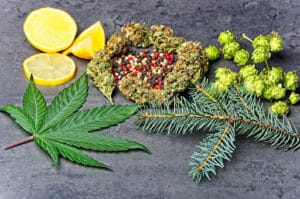What’s the Difference Between Indica, Sativa, & Hybrid Strains?.
Consumers and the cannabis industry are confused about the difference between indica, sativa, and hybrid, and why there’s a better way to predict your high.
We’ve trained Michigan’s dispensary customers to think about cannabis in three groups: indica, sativa, and hybrid strains (we touched on the subject in two recent blogs).
And since there is so much marketplace confusion over just what the three types of strains are -and what you can expect from them – we want to dig deeper.
What is the difference between indica, sativa, and hybrid strains, and how did they become the prevailing cannabis categorization system?

People across the planet have experimented with cannabis for thousands of years. But it wasn’t until the 18th century when Swedish botanist Carl Linneaus identified cannabis sativa, and French naturalist Jean-Baptiste Lamarck later identified cannabis indica that we made a distinction between the two.
We’ve recently derailed the centuries-old cannabis debate with discoveries about the biological functions and active chemical compounds in cannabis, giving consumers new tools to understand and anticipate how they’ll react to different strains.
Sativa vs Indica Myth
Most Michigan dispensary customers understand that indica strains can be relaxing and mildly sedating, and sativas are often psychoactive and energizing. But, as it turns out, things aren’t so simple. Linneaus and Lamarck developed Sativa and Indica to describe the plant’s appearance, not its effects.
Adding to the confusion, nearly all cannabis varieties today are hybrids—most with hazy parentages from crossbreeding and prohibition. And the categorization of indica, sativa, and hybrid has mostly lost whatever usefulness it once had.
A plant’s appearance doesn’t always predict its chemical makeup or effects. A 2015 study observed the chemical compounds in more than 400 cannabis flower and concentrate samples. They noted that the observed data doesn’t support the current cannabis classification system of indica, sativa, and hybrid.
The researchers suggest a new classification system is needed to help medical cannabis patients communicate better with healthcare providers. A new system also helps recreational customers understand how to select strains from a Michigan dispensary.
How Can You Find the Right Strain?
It will take work from the cannabis industry and its consumers to transition out of the sativa vs indica myth. Consumers need to know (and understand) the cannabinoid and terpene makeup of their selected products. According to cannabis expert Dr. Ethan Russo, these compounds are a far better indicator when it comes to figuring out if your flower is energizing or sedating.

Well-Rounded Cannabinoids
As far as cannabinoids go, most Michigan cannabis fans gravitate toward high-THC strains since it’s the plant’s primary psychoactive ingredient. But THC does more than give you a head high– it’s also responsible for unpleasant side effects like food cravings and short term memory impairment. We’ve trained customers to think they’re getting more bang for their buck out of high-THC strains. But other active cannabis compounds can actually amplify, minimize, or change the effects of THC along with providing unique characteristics.
For example, CBD has recently taken the stage with THC as the second most well-known cannabinoid. Though CBD is seeing a meteoric rise in popularity among new cannabis consumers, it’s underappreciated by many THC-obsessed cannabis connoisseurs. THC and CBD share some benefits and characteristics, but consumers who embrace CBD enjoy its anti-anxiety and anti-psychotic effects, since CBD is known to reduce the side effects of THC.
And though CBD and THC are the most significant cannabinoids impacting your cannabis experience, they are only two out of more than 100 different cannabinoids identified in recent decades. Researchers and cultivators are selectively breeding cannabis cultivars to produce higher concentrations of lesser-known cannabinoids. We predict you’ll soon see strains high in cannabinoids like CBN, THCV, THCA, and CBC.
Rich Terpene Profile
Terpenes are another component of cannabis whose presence and concentration are strain-dependent. Checking out a strain’s terpene profile is probably the best way to predict its expected effects.
For example, the terpenes alpha-pinene, limonene, and beta-caryophyllene are known for their energizing effects. On the other hand, linalool and myrcene have relaxing properties. Considering the terpenes present in a strain may be a good method to finding your favorite.
No terpene profile listed? Smell it if you can! Many cannabis connoisseurs find that strains that are appealing to their nose give them the effects that they’re looking for.

Cloud Can Help You Find Your Favorite Strain
Indica, sativa, and hybrid strain categorizations won’t disappear overnight. Michigan dispensary shelves are still lined with products that adhere to the three-strain classification system. But understanding the other variables impacting your cannabis experience within the context of indica and sativa can help you make informed selections. The labels are an excellent first step toward discovering your favorite strains, but they’re not the only step.
At Cloud, we make the strain selection process simple. Between our easy-to-understand product categories and our knowledgeable budtenders, we’re here to help you find the right products.
Shop online for your new favorite strain and pick up at a Cloud dispensary near you!
